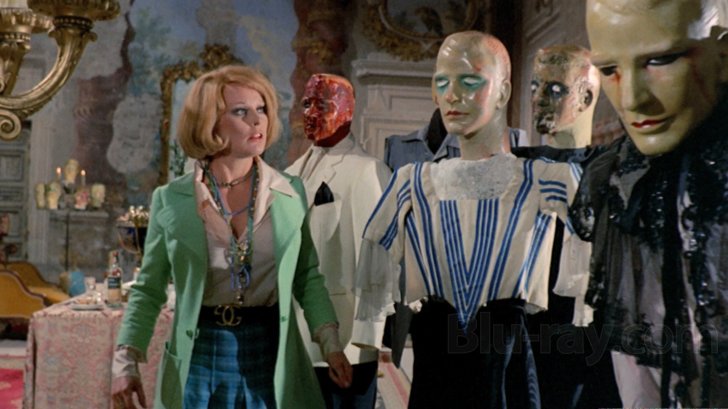While Dario Argento’s films eased me into the fun of some weird-ass Italian horror, Mario Bava is the reason I’ve stayed. Bava is more fun-loving than Argento, and certainly delights in the macabre a bit more. Almost any of his films are worth watching – I’d recommend starting with Black Sabbath, if you’re new to Bava – but his most personal, and personal favorite, is the strange, meandering, not-always-comprehensible-but-that’s-ok Lisa and the Devil, starring Elke Sommer as a young woman who learns that you should never leave the tour group.

Sommer is Lisa, a young woman on holiday in Toledo, looking at grand frescos of happy things, like Satan dragging sinners down to hell. She wanders off from her tour group into a small shop on the backstreets and there comes across Leandro (Telly Savalas), who bears a striking resemblance to Satan in the fresco. Terrified, Lisa flees, only to get lost, accidentally murder a mustachioed stranger, and then be unable to find her way back to the main courtyard as she wanders deeper and deeper into labyrinthine streets. Eventually she gets a ride from a wealthy couple, but they break down on another backroad and wind up at an isolated mansion, where Leandro answers the door. He’s the butler for the Countess (Alida Valli) and her strange son Maximillian (Alessio Orano), who thinks he knows Lisa. So Lisa is trapped in an isolated house with someone who might be the Devil, and that’s actually the least of her worries.
Like many of his giallo counterparts, Bava is often big on the aesthetics and light on the comprehensible plot. But Lisa and the Devil is even more difficult to follow than most, meandering through a sort of lurid Inferno with events that don’t ever really make sense. It isn’t so much what happens as what it looks and feels like as it’s happening, and for that, this is one of Bava’s best films. Canted angles, lurid color schemes, splashes of paint-like blood abound, all regular marks of a Bava film. But this one is both slower and more nuanced than his wilder works like Bay of Blood, and the violence is almost incidental to the main plot, as though Bava belatedly realized he needed to include some murders.
Lisa and the Devil moves at a laconic pace, slowly building the hallucinatory nightmare around its central character that she, eventually, doesn’t even want to escape from. Elke Sommer doesn’t get much to do except be frightened (and be naked), but Telly Savalas is having the time of his life gnawing on the scenery (there are even clear references to his role as Kojack), and Alida Valli meanders her way to her performance as Madame Blanc in Suspiria.
Lisa and the Devil is impossible to synopsize and might put off folks not already interested in Bava’s works, but it’s also one of his best, most intricate films, and feels more like a labor of love in every weird twist. It was eventually repackaged and sold as The House of Exorcism, with scenes added to create an exorcist frame narrative that makes even less sense than the original film…and that’s saying something. The original, however, is well worth the time, especially for anyone wanting to dig a little bit deeper into Bava. This is probably his clearest attempt at an art film, and it’s quite something to behold.
Lisa and the Devil is available to stream on Kanopy and YouTube.

